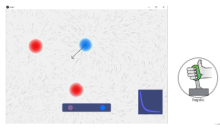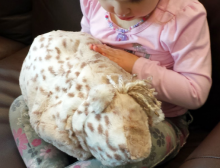Affective Haptics Applications
At SPIN, we are designing to apply affective haptic technologies in practice for applications such as facilitating emotion regulation, supporting synchronization during remote work, and many more.

At SPIN, we are designing to apply affective haptic technologies in practice for applications such as facilitating emotion regulation, supporting synchronization during remote work, and many more.

Investigating the design process of expressive affective haptic robot behaviors

Collection of work on physical human-robot interaction in industrial and manufacturing contexts.
Designed as a bland, unobtrusive appliance, Calmer is a bed for premature infants that replicates mothers' breathing movement and heart rate.

Educational haptic platforms can leverage various modalities in order create effective interactive environments that can support embodied physical interactions. These platforms have the potential to leverage a student’s physical intuition to make abstract topics in physics, math, and other fields of science more concrete.

Voodle is an interface that uses vocal input to design haptic behaviour.
The CuddleBot allows us to use an animal model of therapy to examine how touch interactions influence stress and anxiety mitigation.

We develop machine learning models of affect using touch and biometrics (such as EEG signal, skin conductance, heart rate, etc) to support affective interaction with companion robots for health applications.

Our furry robots' breathing is innately calming. Can we use this therapeutically?

Bits are one-degree-of-freedom actuated sketches which we use as a design tool to explore rendering of emotion through physical and visual motion.
